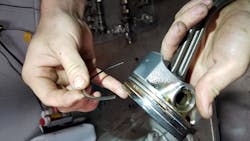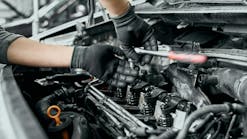Guest Blog: In search of more power, better fuel mileage, lower emissions

Most independent automotive repair shops recommend an aggressive oil change interval for modern engines, especially gasoline direct injection (GDI). If the manufacturer recommends (for example) an 8,500-mile oil change interval, DO NOT stick to that. If you want a properly running engine that will maintain its efficient design, we support the suggested more aggressive oil change interval, every 5,000 miles. But in any case, change the oil twice a year and perform an engine oil treatment once a year. Now you may be wondering, 'But why?'
In search of more power, better fuel mileage, lower emissions
Beginning in the 1960s, automakers have been searching for technologies to reduce emissions from internal combustion engines. Initially, this was in response to air pollution issues in southern California; the California Air Resources Bureau (CARB) became the defacto driver for what eventually became the global push for cleaner-running cars and trucks. In the process of improving and modernizing automotive technology to achieve better emissions, manufacturers also devised smarter ways to derive more power and better fuel mileage from gasoline and diesel engines.
Electronics certainly played a major role in these accomplishments; microprocessor-controlled engine management is now standard. But research into materials, science, and manufacturing technology has also been a significant factor in this new world of automotive design.
Engineers for a long time have focused on reducing the internal friction among the reciprocating and rotating components of an engine. Piston rings are some of the most friction-prone components – they expand and rub cylinder walls to clear it of excess splashed or vaporized crankcase oil, and to keep combustion chamber pressure from leaking into the crankcase. Different piston ring materials have been tested over many years. The newest materials have very low spring tension, thus reducing friction; in combination with the newly formulated synthetic engine oils, they do a good job of keeping crankcase oils separated from combustion chamber gases. The result: Better fuel mileage.
But, here come the problems
Many of the newest gasoline direct injection (GDI) engines are designed with high compression ratios. Ford’s for example, sports a 12:1 compression ratio, about 20 percent higher than the old standard for gasoline engines. At the same time, the compression and oil control rings have lower spring tension. Unfortunately, despite the innovative synthetic oil characteristics, the amount of combustion gases leaking into the crankcase (ring blowby) is increased. Given the longer oil change intervals many manufacturers recommend, there is an increase in oil dilution and contamination of crankcase oil by combustion byproducts.
The effect of oil contamination is that sludge and carbon build up in the crankcase. The sludge begins to settle on piston rings, reducing their effectiveness and therefore further increasing the amount of blowby they allow. This of course accelerates the rate of oil dilution and sludge build-up. The reverse also takes place: The contaminated engine oil gets sucked into the combustion chambers and skews the precisely metered fuel-air mixture. In addition, intake valves, intake ports, combustion chambers, even injector nozzles begin to get caked with burned and hardened carbon sludge. In the cylinder head and crankcase, sludgy oil adversely affects lifters, camshaft phasers, timing chain tensioners, and even the oil pump screen.
The ATS solution
To care for the innards of your engine properly and reduce wear and tear as well as carbon buildup, we recommend you follow the more aggressive oil change intervals mentioned at the top of this article. In addition, we recommend periodic use of an engine sludge cleaner such as one produced by ATS.
ATS Carbon Clean’s advanced pour-in oil treatment breaks down carbon deposits and sludge from lubricated engine components in gasoline and diesel engines. This product cleans carbon deposits from the engine and reduces problems. Simply pour ATS Oil System Cleaner 505CRO into the crankcase prior to changing the oil, then run the engine for the prescribed time. (See instructions on the product bottle.) Then drain and change the oil.
ATS Oil System Cleaner increases engine performance while reducing engine oil consumption all within a 5-15 minute cleaning. It improves oil viscosity and reduces carbon sludge buildup.
Keep the internal components of your engine free and clean of contaminants. Your engine will thank you.
Information provided by ATS Carbon Clean

